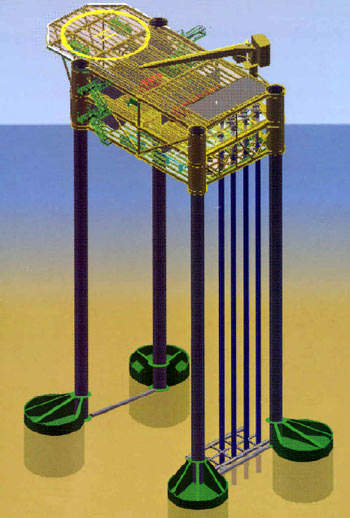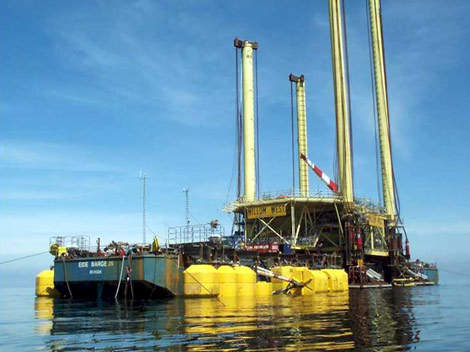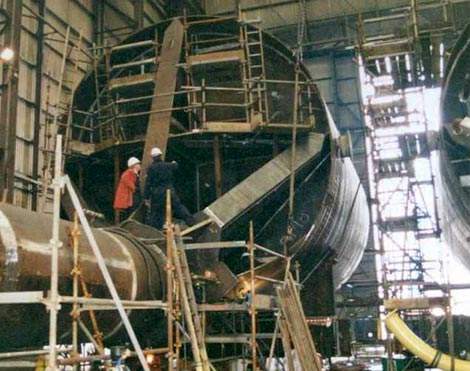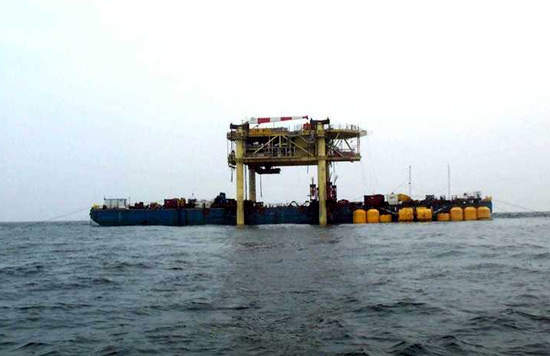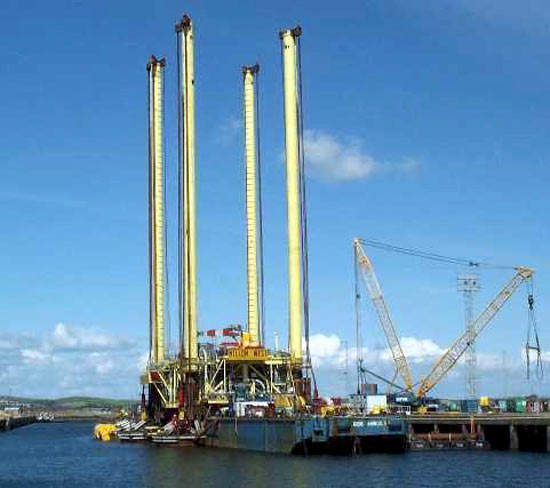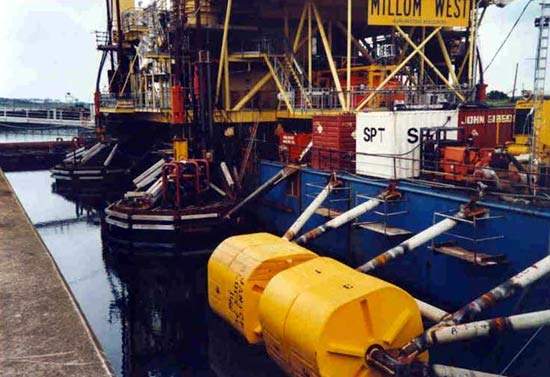The Rivers gas fields are situated in East Irish Sea, offshore of the north-west coast of England near the developed North and South Morecambe fields.
The Millom and Dalton gas fields came onstream in 2000–2001 and supply gas to the UK market via the North Morecambe terminals in Barrow-in-Furness. These fields are operated by the Centrica Energy subsidiary Hydrocarbon Resources on behalf of Burlington (Irish Sea) Ltd.
Calder, Darwen, Crossans, Hodder and Asland (the Rivers Fields) are are also owned by Burlington Resources (Irish Sea) Ltd and are operated by the Centrica Energy subsidiary Hydrocarbon Resources subsidiary on behalf of Burlington Resources.
MILLOM FIELD
Millom is located in blocks 113/26a and 113/27a, approximately 40km west of Walney Island, Barrow-in-Furness. Originally discovered by British Gas in 1982, its recoverable reserves have been estimated at approximately 220 billion cubic feet.
It has been developed using a subsea well in the eastern portion of the field and in summer 2000 an unmanned, minimal facility steel production platform was installed in the western part (block 113/26a).
This platform, standing in a water depth of 33m, consists of two-deck topsides weighing around 400t. The topsides are supported on four independent legs, each weighing about 300t, fixed to the seabed using suction piles operated by the Dutch-based Suction Pile Technology. The suction buckets have a 7m outside diameter and are 9.5m tall.
The platform has six producing well slots, dual production manifolds, methanol injection, a water removal skid, a control room, emergency accommodation, lifeboat and helideck.
During 2000-2001, four production wells were drilled from the West Millom Platform. Two of these – drilled by the Ensco 72 jack-up rig – are horizontal trilaterals penetrating through the Ormskirk Reservoir. The field produces at an average rate of 100 million cubic feet a day, giving an estimated field life of 20 years.
DALTON GAS FIELD
Discovered in 1990 by British Gas, the Dalton gas field lies in block 110/2b, some 40km west of Walney Island. Recoverable reserves are estimated to be approximately 50 to 100 billion cubic feet.
The field is being exploited by means of two sub-sea wells with the gas linked by subsea tieback to the North Morecambe platform and then to the Barrow-in-Furness processing terminal.
RIVERS FIELDS
In June 2002, Burlington Resources received formal approval for its £185m Rivers Fields development. These consist of five marginal gas fields named after five British rivers – Calder, Darwen, Crossans, Hodder and Asland.
The fields, of which Calder is regarded as the largest in reserves, are situated in blocks 110/2b, 110/la, 110/lc, 110/Sa, 110/9a and 110/14 to the south of Millom. The field nearest to the shore – Asland – is approximately 20km west of the English coast and 35km north of the Welsh coast. It is thought to contain reserves of at least 300 billion cubic feet.
The development will be based on a production platform on Calder platform, of similar size to that installed at Millom West.
The project also includes a new 50km-long, 24in-diameter pipeline to carry gas to a new onshore treatment plant adjacent to the existing North Morecambe Terminal in Barrow, Cumbria.
The new pipeline was necessary because the gas is sour, containing appreciable quantities of hydrogen sulphide and nitrogen, which needs to be removed at the Rivers processing terminal. The processed gas is then routed to the existing North Morecambe Terminal for further processing and national network distribution.
Field life is anticipated to be 15 years, with a peak gas production of 4.124 million cubic metres a day. Three production wells were drilled at Calder during 2003, and one each will be drilled at Crossans and Darwen (expected to be in 2007 and 2008, respectively).
CALDER DRILLING
At Calder, one well is vertical (914m) and the other two highly deviated with a vertical depth of 914m and measured length 2,012m. The top sections (813m and 600m) were drilled conductor-less using seawater with viscous sweeps, with cuttings deposited around the well (114t per well).
The lower hole section was drilled with WBM (salt-saturated polymer mud), with cuttings discharged from the rig (245t from the vertical well and 559t from each deviated well); i.e. giving a total of 342t around the wells and 1,363t from the rig.
CONTRACTS
Burlington began work on the Rivers Development in February 2001, and just eight months later awarded an Engineering, Procurement, Installation and Commissioning (EPIC) contract for the platform and export pipeline to the Rivers Joint Venture, comprising Genesis Oil and Gas London and Allseas of the Netherlands.
In January 2002, a £60m Engineering, Procurement, Construction and Management (EPCM) contract for the onshore gas compression and treatment plant at Barrow-in-Furness, Cumbria was awarded at the same time to Costain Oil and Gas Limited of Manchester. Offshore Design and Engineering (ODE) were the project managers for the Calder field contracts.
RIVERS ON-STREAM
Gas from the Calder field (the first of the Rivers fields to come on-stream) reached the new Rivers onshore terminal at Barrow-in-Furness at the start of the fourth quarter of 2004. Crossans and Darwen are being developed together and will deliver gas via subsea wells tied back to the Calder platform.
Calder operates using a normally unmanned platform which can be accessed by maintenance crews via helicopter. The Calder platform has no dedicated accommodation facilities but houses a dedicated emergency shelter in the event of personnel being stuck on the platform.
By the time Calder comes on-stream around the end of 2003, Burlington will have spent around £400m in the East Irish Sea, and will be producing around 210 million standard cubic feet of gas a day, just six years after entering the UKCS.
NEW CONTRACT
In 2004 Costain Petrofac Limited (CPL) was awarded a seven-year contract to provide a wide range of Engineering, Construction and Project Support (ECAPS) services to British Gas Hydrocarbon Resources Limited’s (HRL) Morecambe Bay Asset.
Costain Petrofac Limited is a joint venture between Costain Oil, Gas & Process Limited of Manchester and Petrofac Facilities Management Limited of Aberdeen, with its head office located in Manchester. The contract started on 1 January 2004, and will continue until 2011 with the option to extend to 12 years, through five one-year extension periods.

